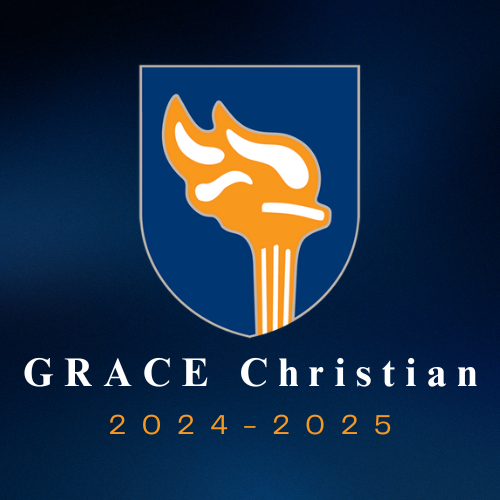All classrooms should either have a projector or a SmartBoard and a projector. DVD players and all other audio-visual equipment must be reserved in advance with the Media Coordinator. Some equipment may be signed out to individual classrooms on a yearly basis. Equipment should be returned to the Media Center.
Video/DVD/Streaming Media Use
All videos and DVD’s must be approved by the administration before viewing.
The general guideline shall be a rating of G for TK-6 students and G or PG for middle and high school students. All requested videos rated otherwise or unrated (YouTube) should be discussed with the administration (an Ad-Blocker should be used when sharing to the class). Teachers should preview all videos and DVD’s in their entirety before submitting a request to the respective administrator. Teachers should also abide by all copyright laws when showing videos, streaming media, or DVD’s. Videos/DVD’s/Streaming media may be used in class for educational purposes. No literary video or DVD should be shown unless the book has already been studied by class.
General Copying Policies
Photocopying is done by individual teachers for classroom use only. Copyright laws govern the use of photocopied materials in schools. Please be aware of the laws and guidelines listed below and follow them.
Single Copying for Teachers
A single copy may be made of any of the following by or for a teacher at his or her individual request for his or her scholarly research or use in teaching or preparation to teach a class:
- A chapter from a book.
- An article from a periodical or newspaper.
- A short story, short essay or short poem, whether or not from a collective work.
- A chart, graph, diagram, drawing, cartoon or picture from a book, periodical, or newspaper.
Multiple Copies for Classroom Use
Multiple copies (not to exceed in any event more than one copy per pupil in a course) may be made by or for the teacher giving the course for classroom use or discussion, provided that:
- The copying meets the tests of brevity and spontaneity as defined below and,
- Meets the cumulative effect test as defined below and,
- Each copy includes a notice of copyright.
Definitions
Brevity
- Poetry: (a) A complete poem if less than 250 words and if printed on not more than two pages or, (b) from a longer poem, an excerpt of not more than 250 words.
- Prose: (a) Either a complete article, story or essay of less than 2,500 words, or (b) an excerpt from any prose work of not more than 1,000 words or 10% of the work, whichever is less, but in any event a minimum of 500 words.
- (Each of the numerical limits stated in the above may be expanded to permit the completion of an unfinished line of a poem or of an unfinished prose paragraph.)
Illustration
- One chart, graph, diagram, drawing, cartoon or picture per book or per periodical issue.
“Special” Works
- Certain works in poetry, prose or in “poetic prose” which often combine language with illustrations and which are intended sometimes for children and at other times for a more general audience fall short of 3,500 words in their entirety. In the above paragraph notwithstanding such “special works” may not be reproduced in their entirety; however, an excerpt compromising not more than two of the published pages of such special work and containing not more than 10% of the words found in the text thereof may be reproduced.
Spontaneity
- The copying is at the instance and inspiration of the individual teacher, and
- The inspiration and decision to use the word and the moment of its use for maximum teaching effectiveness are so close in time that it would be unreasonable to expect a timely reply to a request for permission.
Cumulative Effect
- The copying of the material is for only one course in the school in which the copies are made.
- Not more than one short poem, article, story essay or two excerpts may be copied from the same author, nor more than three from the same collective work or periodical volume during one class term.
- There shall not be more than nine instances of such multiple copying for one course during one class term.
- (The limitations stated above shall not apply to current news periodicals and newspaper and current news sections of other periodicals.)
Prohibitions
Notwithstanding any of the above, the following shall be prohibited:
- Copying shall not be used to create or place or substitute for anthologies, compilations or collective works. Such replacement or substitutions may occur whether copies of various works or excerpts there from are accumulated or reproduced and used separately.
- There shall be no copying of or from works intended to be “consumable” in the course of study or of teaching. These include workbooks, exercises, standardized tests and test booklets and answer sheets and like consumable material.
Copying shall not:
- substitute for the purchase of books, publishers’ reprints or periodicals
- be directed by higher authority
- be repeated with respect to the same item by the same teacher from term to term
No charge shall be made to the student beyond the actual cost of the photocopying.
No copying or electronic forwarding of video or audio copyrighted materials (DVDs, CDs, etc.) are permitted for classroom or school use. Video or audio copyrighted materials may be used only if purchased.
Agreed March 19, 1976. Ad Hoc Committee on Copyright Law. Revision: By Irwin Karp, Counsel Association of American Publishers, Inc.By Alexander C.Hop, Chairman, Copyright Committee



